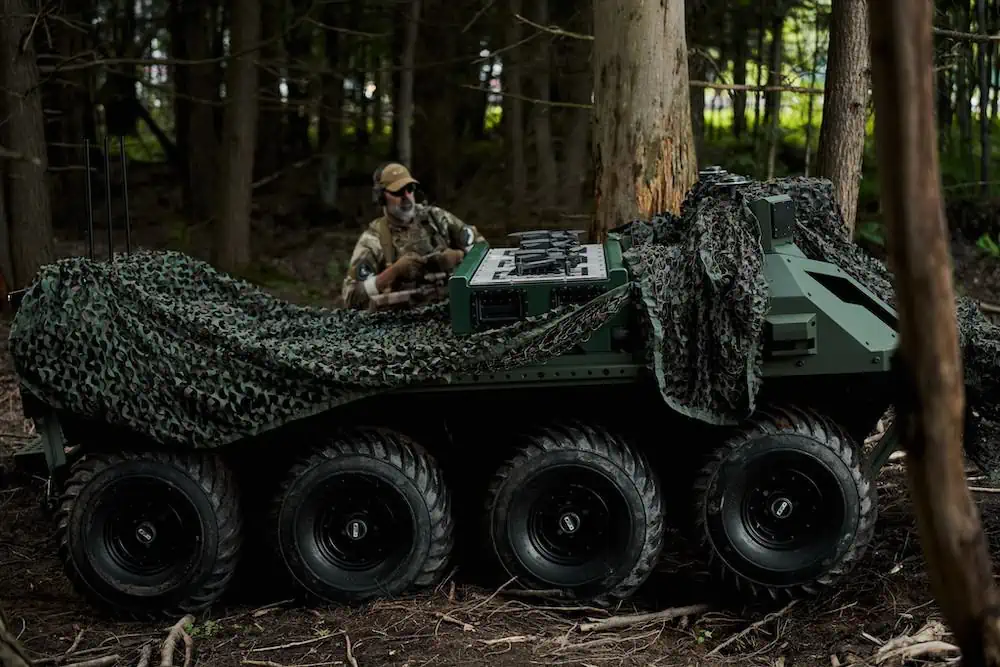
Quaze Technologies, a Canada-based innovative technology company and the creator of wide-surface wireless power transfer, has introduced revolutionary autonomous wireless power transfer capabilities to the defense sector at DSEI 23.
The Quaze concept demonstrator remote charging solution, named Drone Swarm Tactical OverWatch (DSTOW™) addresses a critical need in the world of drone operations, enabling the continuous aerial support of tethered drones with the flexibility and freedom of untethered flights.
With just one Quaze DSTOW, up to three drones of any make or model can charge wirelessly and simultaneously, ensuring reliable charging even in the most hostile environments. This reduces the constraints associated with battery levels, connecting charging cables, or swapping batteries.
The DSTOW is seamless, efficient, and paves the way for autonomous and uninterrupted drone missions, with the versatility to extend across platforms and applications. Whether mounted on various vehicles or employed in static operations, such as mobile command centers, the DSTOW remains a dynamic solution. Its adaptable form factor accommodates UAVs of all sizes and seamlessly integrates onto diverse platforms, ensuring the readiness of drones for extended missions or remote swarm operations.
Quaze’s Surface Power Technology revolutionizes the way devices are powered, enabling easy and reliable wireless charging for remote or autonomous devices on land, sea or air. Powered by magnetic resonance this technology offers a safe, secure and seamless solution to efficiently charge multiple devices with variable power demands across a wide platform surface area.
Quaze remote charging surfaces are scalable (large surface size, high power delivery, multiple number of devices) to suit various demands and the potential applications in defense are vast, by freeing technology from the constraints of cables and redefining how electronic systems access power.
Xavier Bidaut, CEO at Quaze Technologies said. “We’re super excited to be introducing our technology to the wider defence sector at DSEi. It’s early days for us, but I’m convinced that there are multiple applications for our technology across the defence sector”.
Specific to Defence, Quaze have designed and developed their solid state volumetric technology to be compliant with relevant Electromagnetic Interference (EMI) and Electromagnetic Compatibility (EMC) standards.
Quaze partnered with Rheinmetall at DSEI to bring this innovative technology to life via an agnostic unmanned wireless charging solution for autonomous robotics.
The DSTOW was featured as part of Rheinmentall’s innovation portfolio at DSEI where they showcased the Quaze DSTOW on the Mission Master SP autonomous unmanned ground vehicle. At the event the technology was active and used to wirelessly recharge 3 Parrot ANAFI USA drones.
Within this collaboration, Quaze is responsible for the recharging plus the automated drone relays and, Rheinmetall, the software that controls the drone missions.
Alain Tremblay, vice president of business development and innovation at Rheinmetall Canada said: “Ensuring continuous operations and maintaining a permanent ‘eye in the sky’ requires a solution for recharging autonomous drones in the harshest conditions and remote environments. This is imperative for the success of autonomous drone operations and we’re pleased to be showcasing the Quaze technology here at DSEi.”


















